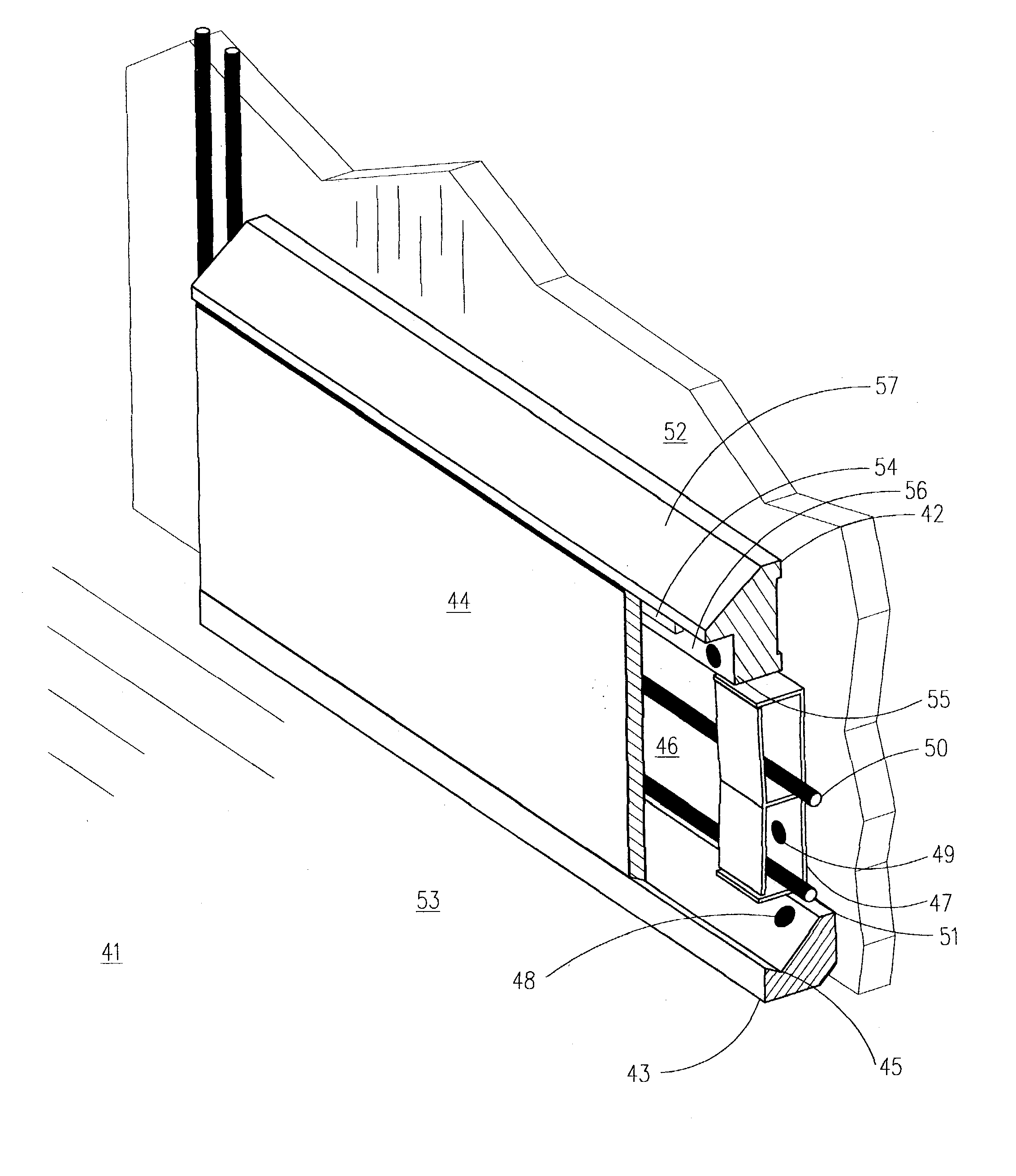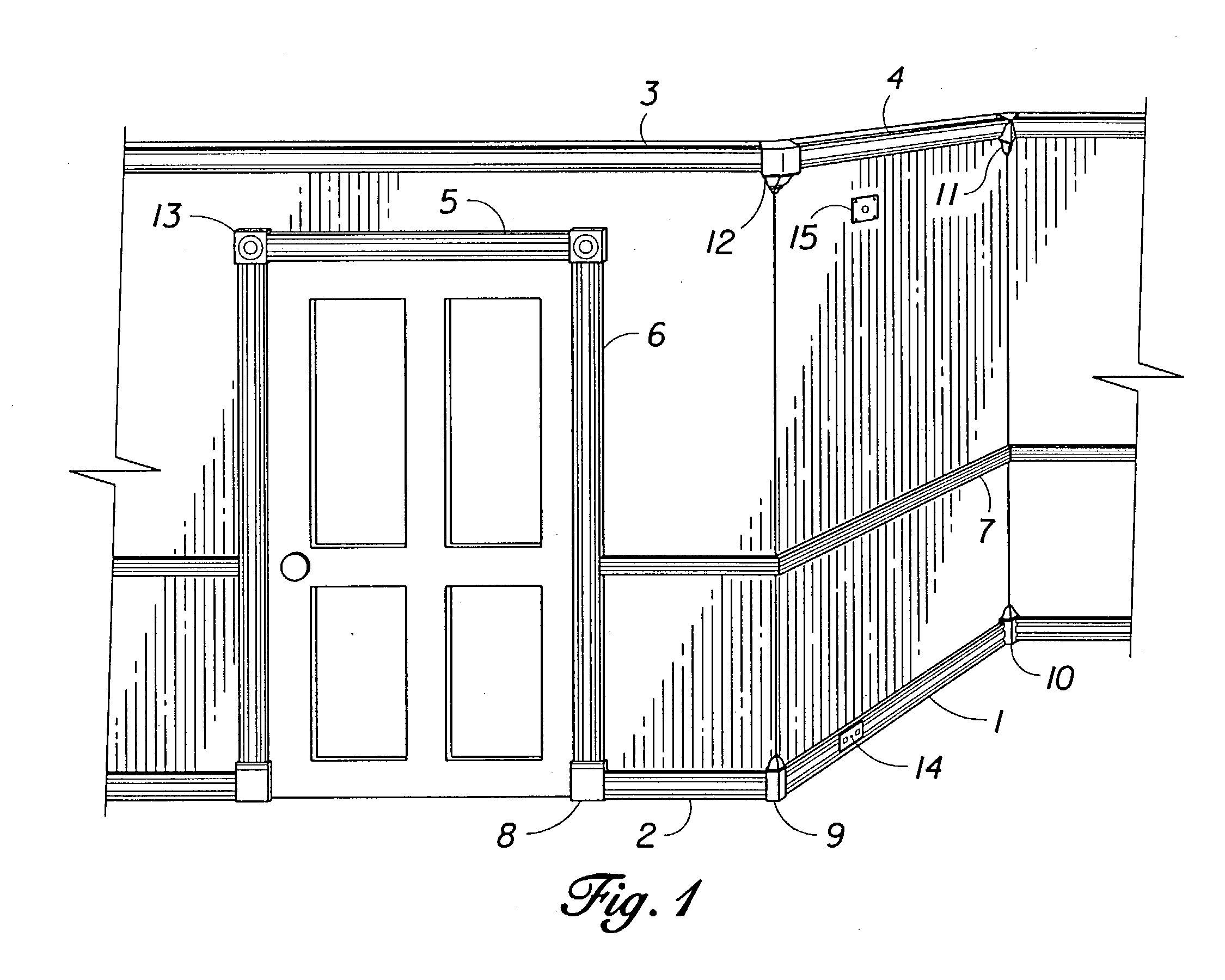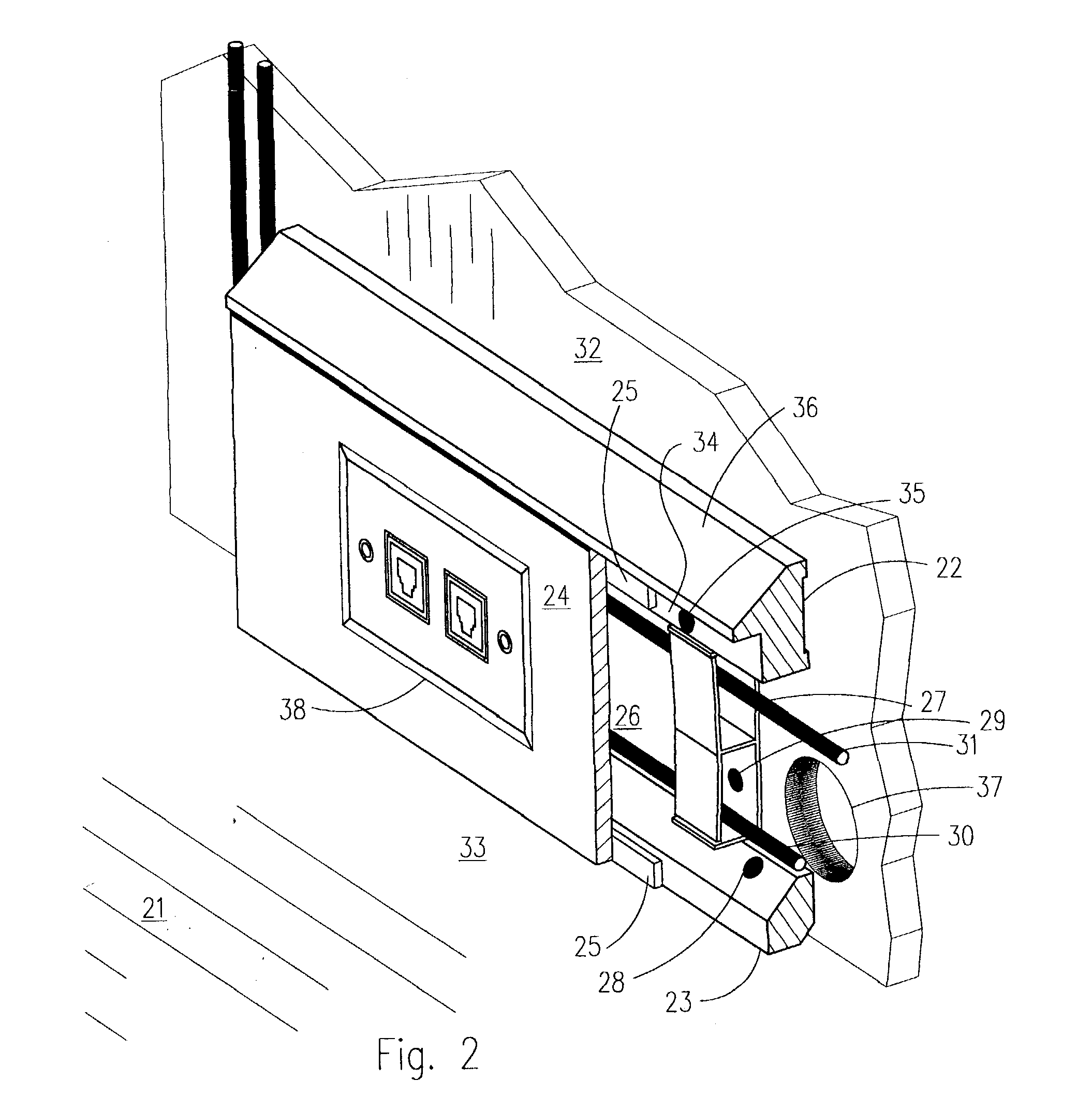Architectural moldings for protecting, concealing and accessing indoor wiring and cables
a technology for protecting, concealing and accessing indoor wiring and cables, applied in the direction of connection contact material, connection device connection, building components, etc., can solve the problems of unable to pre-wire new "smart" homes and buildings, and not being able to fully anticipate future needs and opportunities
- Summary
- Abstract
- Description
- Claims
- Application Information
AI Technical Summary
Benefits of technology
Problems solved by technology
Method used
Image
Examples
Embodiment Construction
[0043] In accordance with the present invention, FIG. 1 shows interior walls and a door in a home with a system of decorative moldings of the present invention covering the low-voltage wiring and cables. Baseboard moldings 1, 2 have the appearance of decorative baseboard, but also provide channels or conduits for wiring and cables. Crown moldings 3, 4 are also designed to cover wiring and cables along the upper part of a room. Casing moldings 5, 6 around a doorway provide channels or conduits for home automation or networking cables and wiring; they are particularly useful for extending the electrical connections around doors and windows of rooms and throughout homes. Chair rail 7, an alternative decorative molding, provides a channel or conduit for connecting circuits and networks at a height a few feet above floor level. Plinth block 8 is an example of a millwork piece installed at the intersection of the baseboard 2 and the door casing 6. Each such piece has openings on the side ...
PUM
 Login to View More
Login to View More Abstract
Description
Claims
Application Information
 Login to View More
Login to View More - R&D
- Intellectual Property
- Life Sciences
- Materials
- Tech Scout
- Unparalleled Data Quality
- Higher Quality Content
- 60% Fewer Hallucinations
Browse by: Latest US Patents, China's latest patents, Technical Efficacy Thesaurus, Application Domain, Technology Topic, Popular Technical Reports.
© 2025 PatSnap. All rights reserved.Legal|Privacy policy|Modern Slavery Act Transparency Statement|Sitemap|About US| Contact US: help@patsnap.com



